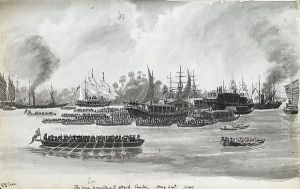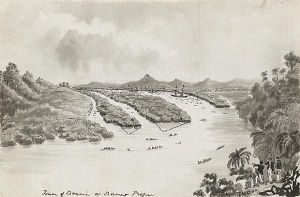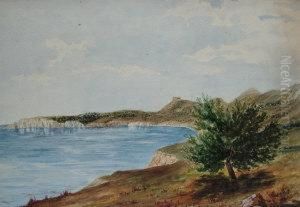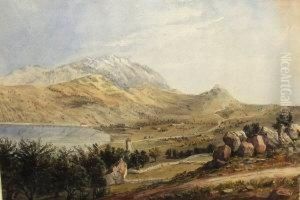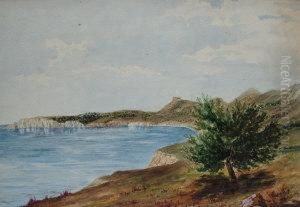Edward Hodges Cree Paintings
Edward Hodges Cree was an English artist known for his detailed and vivid naval and marine paintings. Born on September 27, 1814, in Cornwall, England, Cree developed an early interest in the sea and ships, which would become the central theme of his artistic career. Unlike many artists of his era, Cree's fascination with the maritime world was not just theoretical; he joined the Royal Navy in 1831, an experience that provided him with firsthand knowledge of the vessels and seascapes he would later depict in his work.
Throughout his naval career, Cree served on various ships, and his travels took him to numerous distant locales, including the Mediterranean, the East Indies, and the coast of South America. These voyages offered him endless inspiration and the opportunity to document scenes and events rarely seen by the general public. His detailed journals, filled with sketches and descriptions, have become valuable historical documents, offering insights into naval life and the operation of the Royal Navy during the mid-19th century.
Cree's artistic style was characterized by a meticulous attention to detail and a commitment to realism, attributes that made his work highly valued by contemporaries and later generations alike. His paintings often featured naval battles, ship portraits, and scenes of everyday life at sea, capturing both the grandeur and the peril of maritime adventure.
After retiring from the Navy in the late 1850s, Cree devoted himself more fully to his art. He exhibited at various institutions, including the Royal Academy, although he never became a member. Despite the lack of official recognition, his work was well received and collected by those with an appreciation for naval history and maritime art.
Edward Hodges Cree passed away on August 25, 1901, in Eastbourne, England. His legacy is preserved not only through his paintings but also through his journals, which continue to be a subject of interest for historians and art enthusiasts. Cree's work offers a unique glimpse into the naval world of the 19th century, bridging the gap between historical documentation and artistic expression.




